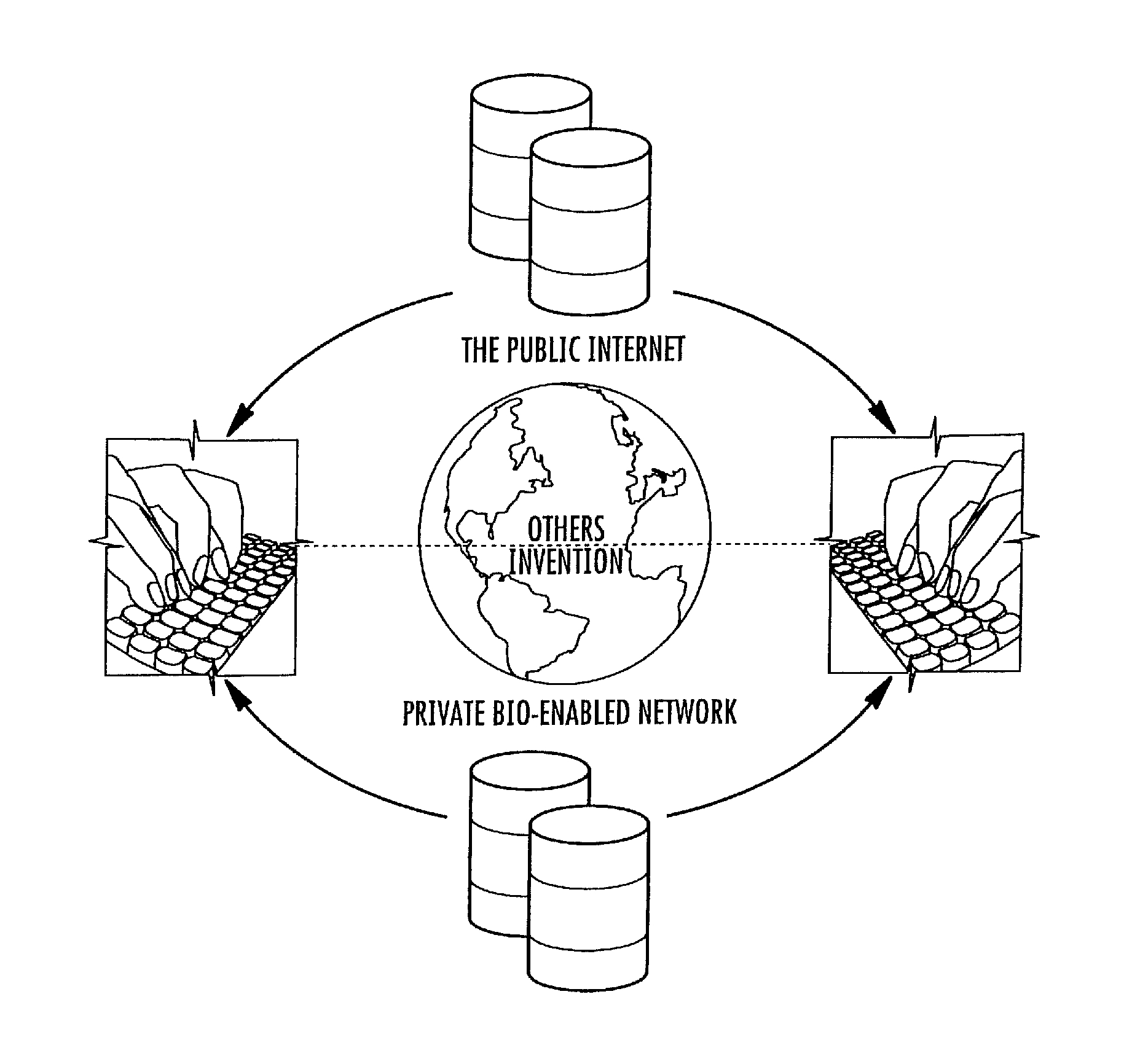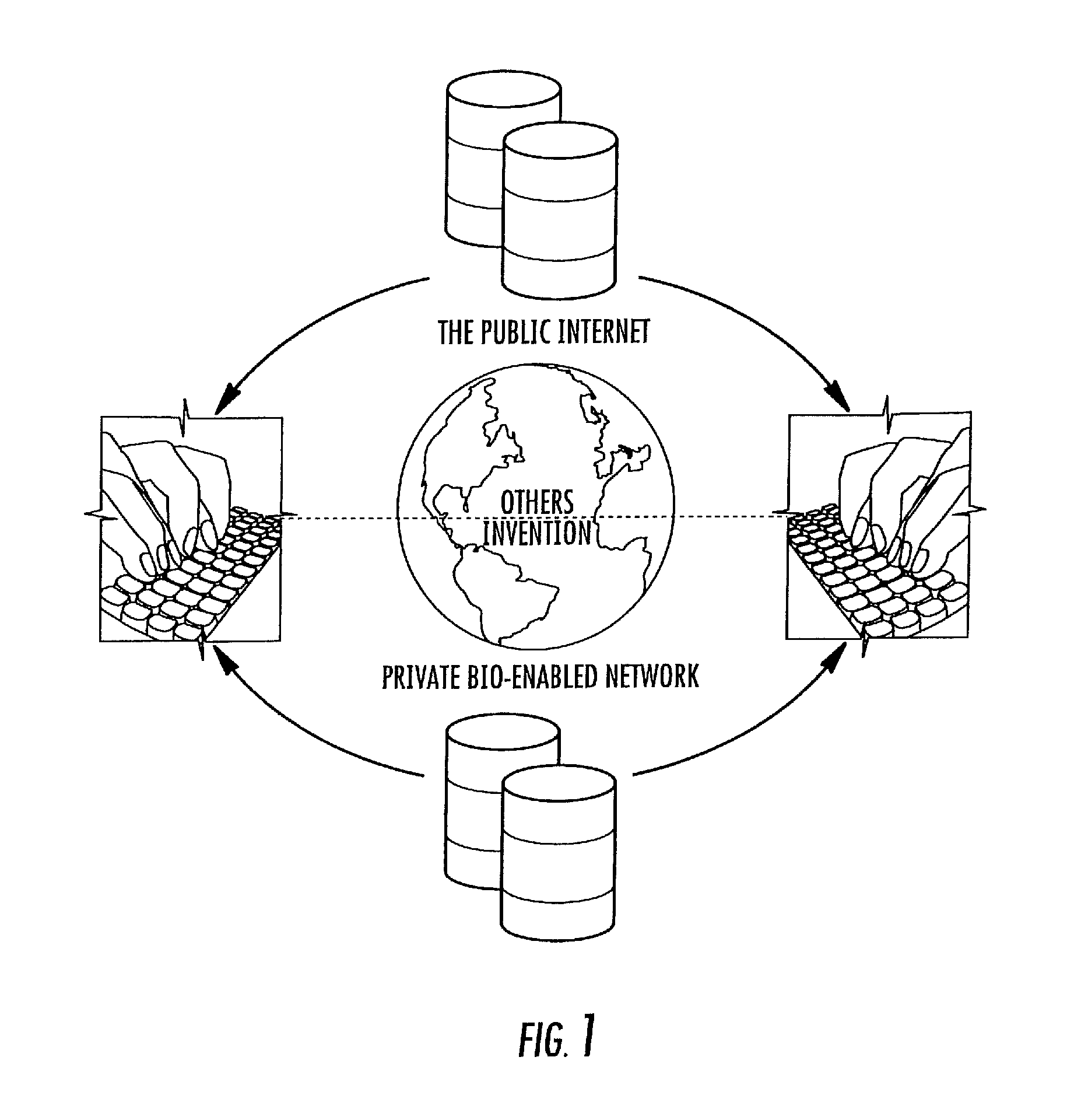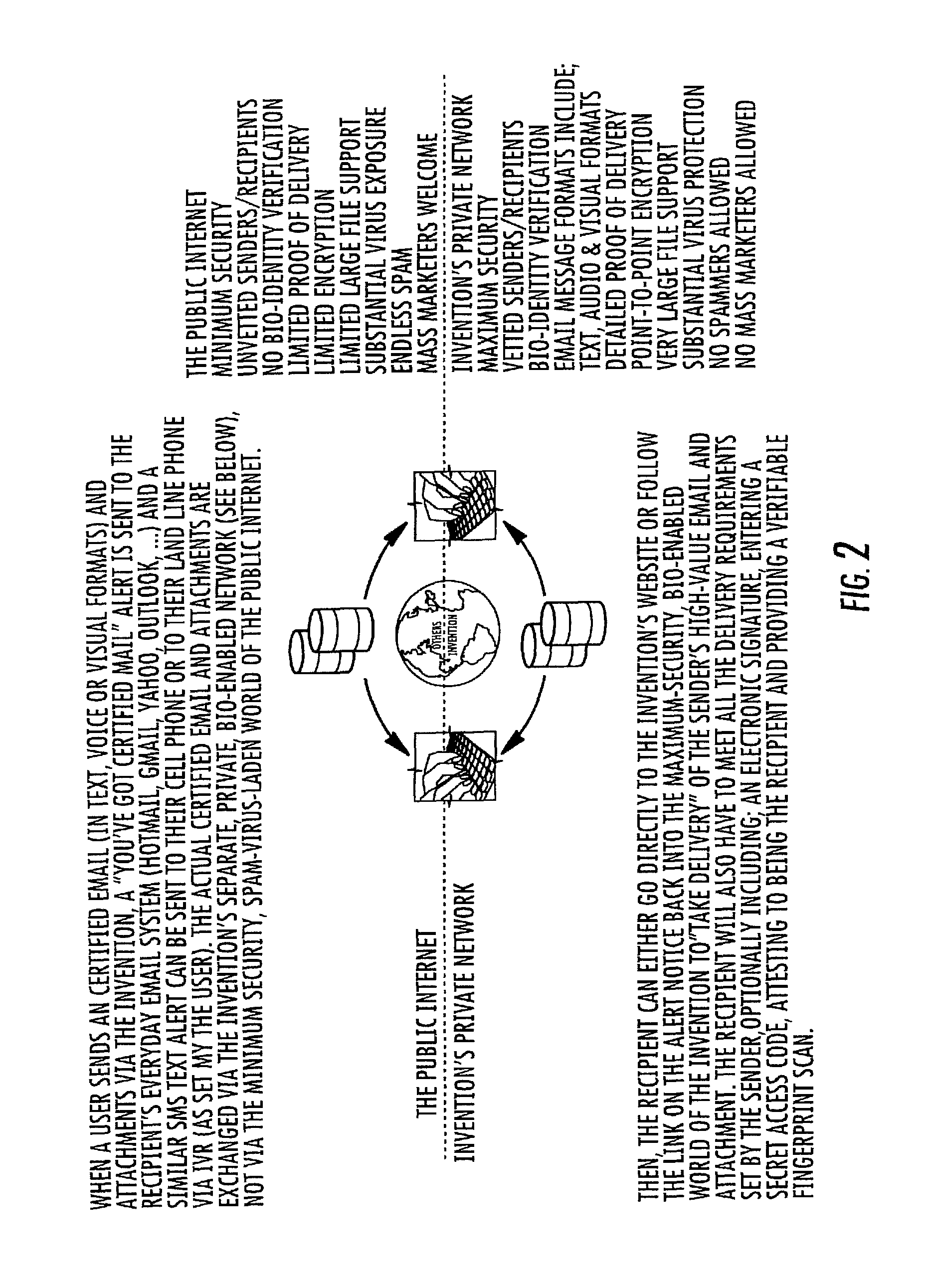Unfortunately, so have the problems of identity
verification, security, privacy and proof of delivery; not to mention all the spam, viruses, and other harmful
malware which has become the norm with using the popular, everyday email systems like HOTMAIL, AOL, GMAIL and even OUTLOOK.
The challenge is, how does a recipient determine the legitimacy or know the true intentions of the sender in the world of the “Unvetted Public Internet”.
And, as spam filters try to assist, they often catch the good emails (with the bad) that users do want, causing them to continually review the contents of the spam log to identify and retrieve them for normal viewing.
Even the senders of emails worry and wonder if what they send gets to the right location or to the intended person, especially when exchanging important (e.g., confidential), high-value email messages and files.
All it takes these days in most everyday email systems is to know someone's User ID and
password and they can wreak havoc in their personal or professional lives, or even cause the demise of a publicly traded company if insider information (within an email message) is stolen or intercepted by those not intended to see such confidential information.
But, they do so within the low-security infrastructure of the popular, everyday email systems like HOTMAIL, AOL, GMAIL and OUTLOOK and the “very public and very vulnerable” Internet they use as their worldwide network.
So, the sender of certified email in this environment may not have included a
virus or
malware in it, but it's still “junk mail” (a.k.a. unwanted spam) if it was unsolicited.
Although, these services simply get their
package to “an adult at the address specified”, and make no guaranteed (or effort) to get it to the person named on the delivery form.
Such delivery concerns, even minimally resolved, are causing senders and recipients to endure these substantial expenses and
time delays.
Also, with busy days and hectic schedules few people talk directly these days and often settle to exchange email messages and attachments.
But, textual (word based) email messages are one-dimensional, cumbersome to type, require use of a keyboard, are lacking in precision, add to
confusion (e.g., what did they really mean by that?) and filled with popular
typing short cuts like or to try and add emphasis.
Yet, even if 100% effective communication options were possible today in most popular message exchanges, many senders and recipients would be reluctant to use them for fear that such crisp, clear and concise messages might fall into improper hands due to lesser security and greater
vulnerability of popular, public-Internet-based email systems.
3) Prior Existing Solutions1. GOODMAILa. The design is focused on “pre-confirming” so-called “good senders” through the public email network to assure recipients that the senders are legitimateb. But their solution is inadequate because:i.
They do not offer recipient proof of delivery features, andii.
They do not offer a separate, secure network and infrastructure and
email management system, and thus cannot provide adequate levels of security and privacy, andiii.
They do utilize existing open / public email systems and thus are vulnerable to their same inadequacies in security and privacy, andiv.
They do not accommodate very large attachments, andv.
They do not support voice or visual (video) email message formats, andvi.
They do not offer biometric identity
verification.2. READNOTIFYa. This provides an email proof of
delivery system as an add on to existing email systemsb. But their solution is inadequate because:i.
They do provide limited proof of delivery, but they do not confirm the identity of the recipient or sender, andii.
They do not offer a separate, secure network and infrastructure and
email management system, and thus can not provide adequate levels of security and privacy, andiii.
They do utilize existing open / public email systems and thus are vulnerable to their same inadequacies in security and privacy, andiv.
They do not provide for very large attachments, andv.
They do not support audio or visual (video) email message formats, andvi.
They do not offer biometric identity verification.3. POINT OF MAILa. This is a proof of
delivery system that will tell you an
IP address that read or opened a message within an existing email systemb. But their solution is inadequate because:i.
They do not offer a separate, secure network and infrastructure and email
management system, and thus can not provide adequate levels of security and privacy, andiii.
They do utilize existing open / public email systems and thus are vulnerable to their same inadequacies in security and privacy, andiv.
They do not address the need for large attachments, andv.
They do not support voice or video email messages, andvi.
They do not offer biometric identity verification.4. RPOSTa. They offer features to support proof of delivery to a specific computerb. But their solution is inadequate because:i.
They do not offer a separate, secure network and infrastructure and email
management system, and thus can not provide adequate levels of security and privacy, andiii.
They do utilize existing open / public email systems and thus are vulnerable to their same inadequacies in security and privacy, andiv.
They do not provide for large attachments, andv.
They do not support audio or video email message formats, andvi.
They do not offer biometric identity verification.5. DIGI-SIGNa. They offer
encryption technology as a means for security which requires the recipient to obtain the decryption
software and a key.b. But their solution is inadequate because:i.
They are not able to prove with biometric certainty that a message was received, andii.
They do not offer a separate, secure network and infrastructure and email
management system, and thus can not provide adequate levels of security and privacy, andiii.
They do utilize existing open / public email systems and thus are vulnerable to their same inadequacies in security and privacy, andiv.
They do not provide for large attachments, andv.
They do not support audio or video email message formats.6.
WHALE MAILa. They provide the ability to send large files using their own FTP systemb. But their solution is inadequate because:i.
They do offer a separate network and infrastructure, but are not adequate in their levels of security, privacy and identity verification as is required for the exchange of confidential, high-value messages and files, andiii.
They are not able to prove with biometric certainty that a large file was received or sent by specific users, andiv.
They do not support adequate identity verification of both sender and recipientvi.
They do not offer biometric identity verification.7. YOUSENDITa. They provide the ability to send large files using their own FTP systemb. But their solution is inadequate because:i.
They do offer a separate network and infrastructure, but are not adequate in their levels of security, privacy and identity verification as is required for the exchange of confidential, high-value messages and files, andiii.
They are not able to prove with biometric certainty that a large file was received, andiv.
They do not support adequate identity verification of both sender and recipientvi.
They do not offer biometric identity verification.8. DIGITAL PERSONAa. They offer biometric security and identity verification products and capabilityb. But their solution is inadequate because:i. it does not provide a system or infrastructure to send secure email messages and attachments, andii. it does not provide a system or infrastructure to receive secure messages and attachments, andiii.
They use private networks to allow for control, tracking and
traceability, but they ship to “any adult” at the address specified, and not to a specific personb. But their solutions are inadequate because:i.
They do not offer biometric identity verification of either a sender or recipient, andv.
They do not allow the integrated delivery of electronic emails and attachments, andvi.
They do not accommodate expedited delivery of very large attachments, except on CD or other media on an overnight basis, andvii.
They do not support expedited delivery of voice or video message formats, except on CD or other media on an overnight basis.
 Login to View More
Login to View More  Login to View More
Login to View More 


